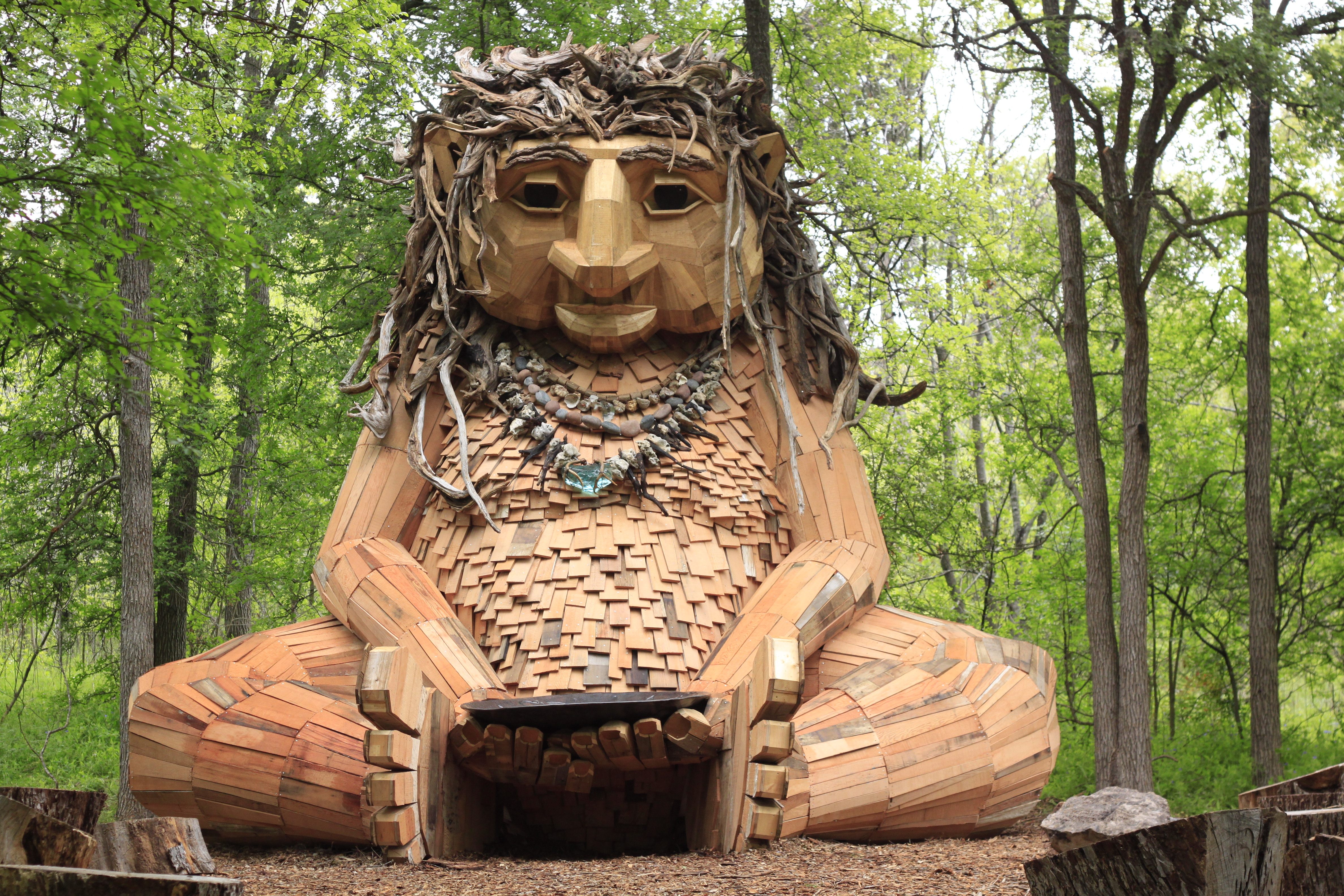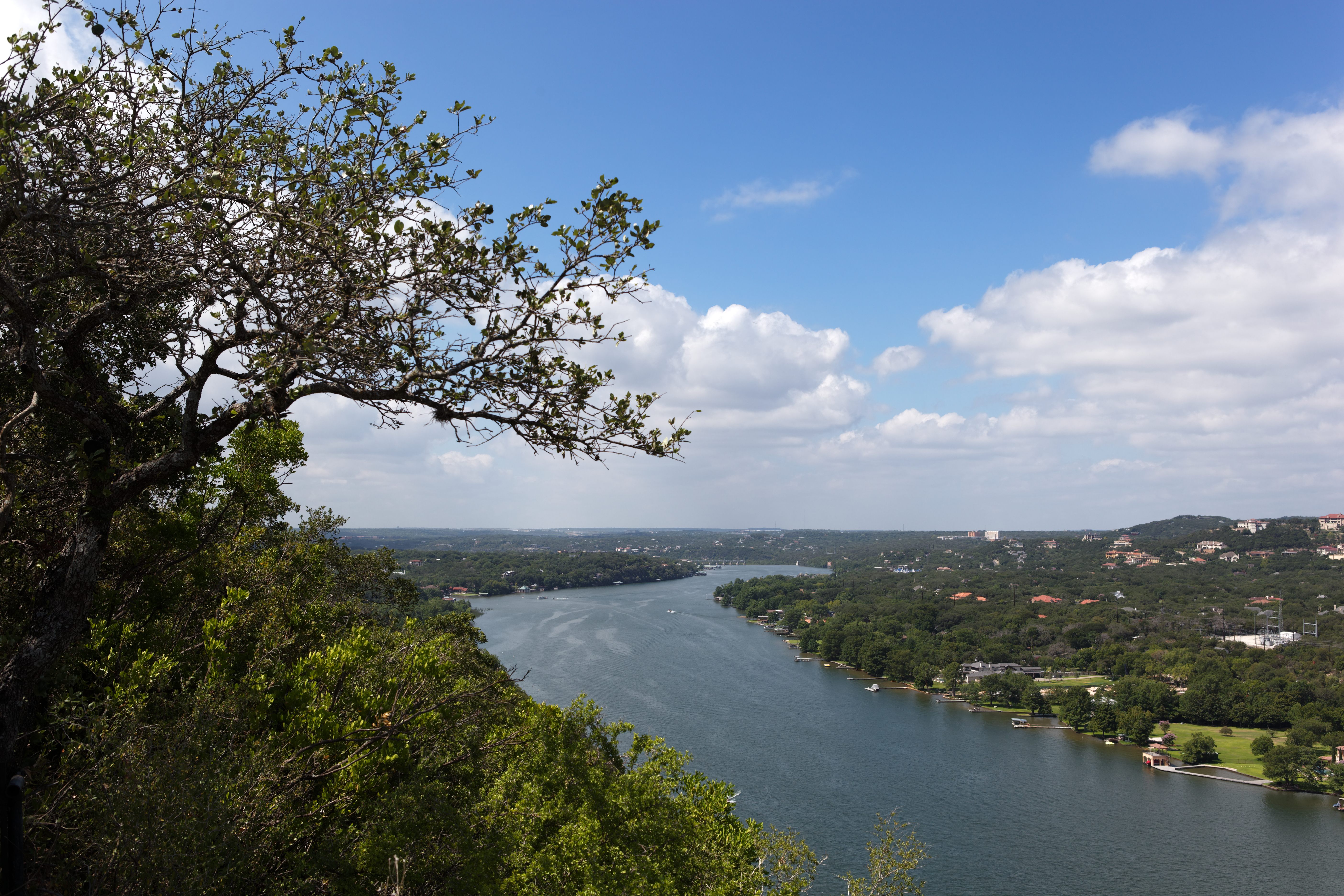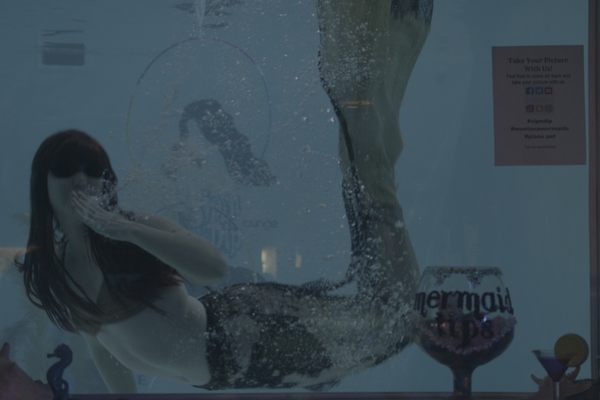
10 Ways to Enjoy Austin’s Unexpectedly Lush Natural World
City life and green space go hand in hand
Many people come to Austin, Texas for the barbecue, or the beer, or the music—but everyone should stay for the surprising displays of nature the city has to offer. Roughly 15% of the city’s land is dedicated to green space, and Austinintes love taking advantage of the parks, trails, rivers, and swimming holes at their fingertips. Watch bats fill the sky at night, take a paddleboard along the reservoir, or hike to waterfalls—in Austin, it’s easy to forget you’re in a city.

1. Congress Bridge Bats
Just south of downtown Austin, you’ll find the largest urban bat colony in North America. An estimated 1.5 million bats live beneath the Congress Avenue Bridge that stretches over Lady Bird Lake, and on clear nights between spring and fall, crowds gather to watch them fly. Just before sundown, you’ll find kayaks, canoes, and paddleboards on the lake, their paddlers waiting for the bats to emerge. And it’s quite the site when they do: the whole colony fills the sky like a cluster of black stars, then disperses to forage for food. It’s one of the most special natural experiences the city has to offer, and it’s even got the added benefit of keeping summer mosquitos—a common snack for the Mexican free-tailed bat—at bay.

2. Mayfield Park
This free public park near the Colorado River is full of birds you might not expect to see in Texas: the ever-colorful peacocks and peahens. The elegantly manicured park was once a private residence belonging to Austin politician Allison Mayfield, who bought its 23 acres in 1909. The summer residence stayed in the family until Mayfield’s daughter, Mary, died and left the land to the city. She was also the one to welcome peafowl to the estate—the technicolor birds who now roam the park are descendants of the birds she received as a present from friends. Today, birds and humans alike can enjoy the park’s water lilies, towering palmettos, koi ponds, complete with turtles, frogs, and fish.

3. Barton Springs Pool
In the heart of Zilker Park, minutes from downtown, lies a 200-yard swimming paradise. Barton Springs Pool features year-round, 68-degree, clear water, deep diving and shallow areas for the kids and grassy hills for sunbathing. The pool is fed by a set of natural water springs, and is open six days a week for swimming. Evenings bring a different sort of reverie: once a month, locals gather for the Full Moon Party, where swimmers celebrate by howling in unison together under the moonlight. But humans aren’t the only ones enjoying these waters: Barton Springs is home to the Barton Springs Salamander and the Austin blind salamander, which can only be found within the confines of the pool. For the sake of the species, no eating or drinking (aside from water) is allowed around the pool—so be sure to snack ahead of time.

4. Pease Park (Troll)
In Austin’s first public park, you can amble along trails that line the creek, lounge in a treehouse, play a game of tennis—and now, visit a troll. Just this year, Danish artist Thomas Dambo unveiled Malin, a giant troll made primarily from recycled wood planks. She sits peacefully in the center of the park, surrounded by trees and holding what looks like a shallow dish full of water: Malin’s Fountain. The sculpture is there for park visitors, both human and bird alike. It serves as a public art piece and bird fountain, which supports the park’s conservancy efforts. This, Dambo says, is a quiet way to encourage humans to share water and resources with other creatures. It’s also one of Austin’s most exciting pieces of public art, hidden among the park’s quiet woods.

5. Ann and Roy Butler Hike-and-Bike Trail
Another beloved body of water in Austin is Lady Bird Lake, named for the former First Lady, Lady Bird Johnson. At first glance, you might think this reservoir that borders much of Central Austin is a river, given its length and shape. The city created the reservoir in 1960 as a cooling pool for a local power plant, but today it’s mostly used for recreational paddling. Along its edge is the Ann and Roy Butler Hike-and-Bike Trail, an always-popular 10-mile trail perfect for walking off a big barbecue lunch or getting a great view of the city on two wheels. You can follow it for a complete lap around Lady Bird Lake, one mile of which stretches directly over the water, named “The Boardwalk”. On weekdays you’ll likely share the trail with commuters; on weekends, the lake by your side will fill with kayakers and paddleboarders.

6. Lady Bird Johnson Wildflower Center
If you’ve ever been to Texas in the spring and seen wide patches of bluebonnets nearly everywhere you go, you have Lady Bird Johnson, the former First Lady, to thank. A dedicated naturalist, in 1982 she set out to create a wildflower research center in Austin along with actress Helen Hayes. The center has since expanded, and is now a botanical garden that’s home to over 900 species of native Texas plants, including wildflowers of every color and shape. You can find them both in curated gardens and managed wildlands that fill out the center’s sprawling 284 acres.

7. Barton Creek Greenbelt
For those looking for a more vertical experience of Austin’s nature, the Barton Creek Greenbelt offers not just hiking and biking trails and plenty of space for picnic-blanket leisure, but bouldering and climbing as well. The area includes 12 miles of trails, as well as seasonal swimming holes and even waterfalls after rainfall. Hike a mile and a half from the Greenbelt’s main access point and you’ll hit Gus Fruh, a dramatic-looking swimming hole next to Urban Assault, a famous rock wall that’s beloved by local climbers. Walk on and you’ll find Campbell’s Hole, one of the city’s quieter swimming spots. The Greenbelt is also home to Twin Falls, a waterfall surrounded by lush forest, and the Hill of Life, a beloved (and steep!) trail for mountain bikers and hikers alike.

8. Mt. Bonnell
For the best view of Austin, head to Covert Park along the Colorado River. Here you’ll be able to climb Mount Bonnell, the highest point in the city at 781 feet above sea level. Getting up there is an easy, accessible walk up 102 steps, and it offers sweeping views of the city and surrounding landscapes. Up top, you’ll find a view deck and pavilion. There’s also a trail you can take up to the summit, which is popular with hikers and mountain bikers.

9. Laguna Gloria
Just five miles from downtown is The Contemporary Austin - Laguna Gloria, a villa and sculpture garden that feels worlds away from the city’s urban bustle. Former Austin American-Statesman editor Hal Sevier and his wife, Clara Driscoll, built the home in 1914 to mimic the elegant homes along Lake Como they’d seen on their honeymoon. Driscoll was an avid gardener, and planted a wide variety of native plants on the grounds.The couple donated the estate to the city in 1943, and it became a museum in 1961. Today, you can walk quiet wooded pathways to explore the sculptures scattered along the grounds and gardens.

10. Deep Eddy Pool
West of downtown, on the northern banks of the Colorado River, lies Texas’ oldest swimming pool. Its clear-blue waters look more Caribbean than Texan, but they come from natural springs below the ground, which keep the temperature regulated at between 68 and 70 degrees Fahrenheit year-round. The pool includes a ten-lane lap pool for the athletically inclined, and a one-acre wading pool for those more interested in leisure. From the water, you can look through pecan and oak trees out over the river, for another glimpse of the natural wonder nestled into city life.
Sponsored by Visit Austin. Learn more and plan your getaway here.



































Follow us on Twitter to get the latest on the world's hidden wonders.
Like us on Facebook to get the latest on the world's hidden wonders.
Follow us on Twitter Like us on Facebook